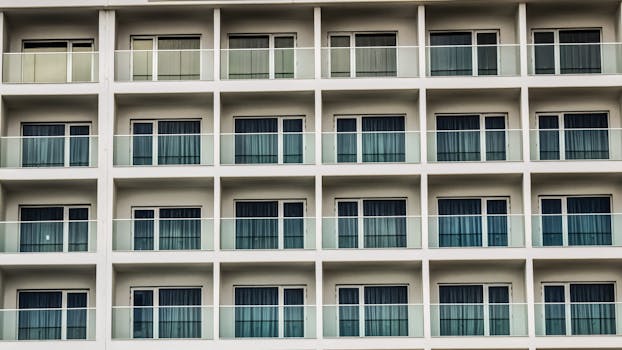Simplicity meets sophistication: The Rise of Minimalist Design in Hotels.
The Rise of Minimalist Design in Hotels: Over the past decade, there has been a significant shift in the design philosophy of hotels, with minimalist aesthetics gaining popularity. This trend embraces simplicity, clean lines, and a focus on functionality, creating a serene and uncluttered environment for guests. Minimalist design in hotels has become a preferred choice for travelers seeking a calming and contemporary experience, as it promotes relaxation, mindfulness, and a sense of well-being. This introduction explores the reasons behind the rise of minimalist design in hotels and its impact on the hospitality industry.
The Benefits of Minimalist Design in Hotels

The Benefits of Minimalist Design in Hotels
In recent years, minimalist design has become increasingly popular in the hotel industry. This sleek and simple aesthetic has captured the attention of both hoteliers and guests alike. But what exactly is minimalist design, and why is it gaining so much traction in the hospitality industry?
At its core, minimalist design is all about simplicity and functionality. It embraces clean lines, neutral colors, and a clutter-free environment. This design philosophy focuses on stripping away unnecessary elements and creating a space that is both visually appealing and highly functional.
One of the key benefits of minimalist design in hotels is its ability to create a sense of calm and tranquility. By eliminating clutter and unnecessary decorations, minimalist hotels provide guests with a peaceful and relaxing environment. This minimalist approach to design allows guests to escape the chaos of everyday life and truly unwind during their stay.
Another advantage of minimalist design is its versatility. Minimalist hotels can cater to a wide range of guests, from business travelers to families on vacation. The simplicity of the design allows guests to personalize their space and make it their own. Whether it’s rearranging furniture or adding personal touches, minimalist hotels provide a blank canvas for guests to create a space that suits their needs and preferences.
Minimalist design also promotes sustainability and eco-friendliness. By focusing on simplicity and functionality, minimalist hotels often incorporate sustainable materials and energy-efficient features. This not only reduces the hotel’s environmental impact but also appeals to guests who are conscious of their carbon footprint. Many travelers today actively seek out eco-friendly accommodations, and minimalist hotels are well-positioned to meet this demand.
In addition to its aesthetic appeal and environmental benefits, minimalist design also offers practical advantages for hoteliers. The simplicity of the design makes it easier to maintain and clean, reducing the time and effort required for housekeeping. This can result in cost savings for hotel owners and operators.
Furthermore, minimalist design allows hotels to maximize their space and create a sense of openness. By eliminating unnecessary furniture and decorations, minimalist hotels can make even small rooms feel more spacious and inviting. This can be particularly beneficial in urban areas where space is at a premium.
Finally, minimalist design aligns with the current trend towards experiential travel. Today’s travelers are seeking unique and immersive experiences, and minimalist hotels provide just that. By creating a visually striking and thoughtfully designed space, minimalist hotels offer guests an experience that goes beyond just a place to sleep. The minimalist aesthetic becomes part of the overall guest experience, enhancing their stay and creating lasting memories.
In conclusion, the rise of minimalist design in hotels is not without reason. The benefits of this design philosophy are numerous and far-reaching. From creating a sense of calm and tranquility to promoting sustainability and maximizing space, minimalist design offers a range of advantages for both hoteliers and guests. As the demand for unique and immersive experiences continues to grow, it’s no wonder that minimalist design has become a popular choice in the hospitality industry.
Q&A
Q: What is the rise of minimalist design in hotels?
A: Minimalist design in hotels refers to a growing trend where hotels adopt a simple and clean aesthetic, focusing on essential elements and removing unnecessary clutter or decoration.In conclusion, the rise of minimalist design in hotels can be attributed to its ability to create a sense of calm and simplicity for guests. This design approach focuses on clean lines, neutral colors, and uncluttered spaces, allowing guests to relax and unwind. Additionally, minimalist design often incorporates natural elements and sustainable materials, aligning with the growing trend of eco-consciousness in the hospitality industry. Overall, minimalist design in hotels offers a contemporary and sophisticated aesthetic that appeals to modern travelers seeking a minimalist and tranquil experience.